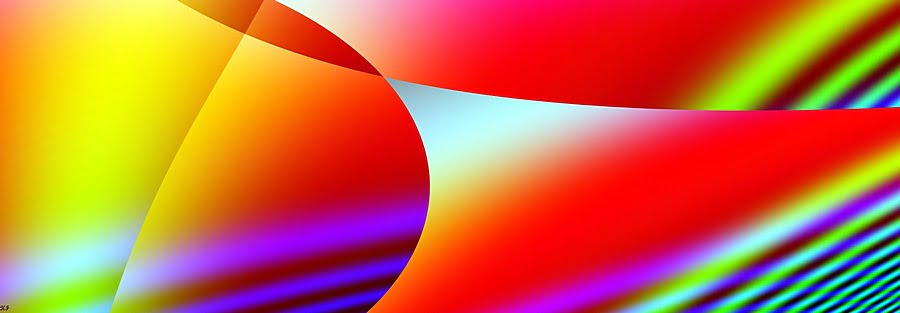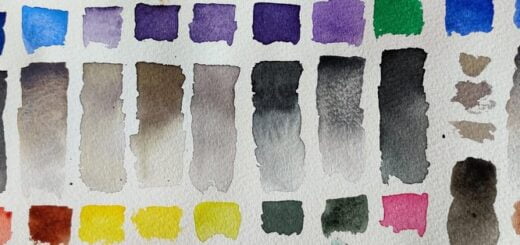Beginner’s guide to mixing colors – Material

This is the first post about color mixing, it will be followed by others.
Colors
It is important to have the right colors as a starting point for mixtures. All colors that consist of more than one pigment are automatically disqualified, only unmixed colors work to mix color with. For some manufacturers, this means that more than half of their range disappears before the first mix. It is also important to choose colors with good blending properties, e.g. Prussian blue is very similar to Phthalo blue, and has similar properties, but is still a worse color when it comes to mixing. For those who want to mix color, I recommend that you get these eleven colors.
Palette

2. Same as last but of porcelain.
3. My favorite, large wide cups and of porcelain.
4. Giant plastic palette.
5. Small serving dish works great.
6. A white egg holder.
7. A white egg cup may work.
8. A drinking glass for very large amounts of color.
You have to have something to mix the colors in, many only use the color box lid for this, but it has limitations in use. It is better to use a palette that usually has several and sometimes larger cups. The lid of the paint box is good to use when you are painting outside and do not have access to a real palette.
As I see it, a good palette should have large, spacious, not too wide mixing holes. I do not really like the large flat color mixing surfaces that English and American artists are so happy to use. The cheap palettes are made of plastic, they work great, but you have to put up with them being gradually stained by the staining colors. All plastic pallets become dirty and the staining cannot be removed. If this bothers you, you may want to invest in one that is made of ceramic that is much easier to keep clean. A disadvantage of ceramics can be the weight, good at home but perhaps not so suitable on the trip, on the other hand, they lie still because they are heavy. A good plastic palette can be bought for under $ 2 while one in ceramics often costs more than $ 15.
There are plenty of good alternatives to purpose-built pallets, e.g. egg holders, drinking glasses, ice cube trays, snail plates, egg cups, small serving dishes, plates and the like. There are many things that can work as a palette, sometimes better than the real palettes and at often lower prices. However, the alternatives must be white. It is not possible to mix color on a red plate.
Best brush
It is of course possible to mix paint with all types of brushes, but some are more difficult to use for this than others. Your large fine sable brush is not the best choice, nor would I recommend a squirrel brush for this. With large brushes you will add large amounts of water to the mixture, it is difficult to avoid. It gets even worse if the brush is made of sable or squirrel that holds a lot of liquid, pale paint mixtures and water-soaked pans are often the result. Avoid the large fine brushes for color mixing. If you own an old worn synthetic brush in sizes 8 to 10, it is perfect for the purpose. If you use watercolor paint in pans, it wears on the brush to take large amounts of paint from them, it is better to wear on a cheap bad brush than an expensive fine brush.
Lighting
Daylight is the preferred lighting when painting, of course. All types of lamps are inferior to daylight. But there is good and bad lighting. The worst are old-fashioned fluorescent lamps that have large gaps in their light spectrum and unevenly distributed peaks, if a painting is to be hung in a room that has fluorescent lighting, it must also be painted in the same room, otherwise the colors will be wrong. As it is, fluorescent lamps are not used that often anymore. All warm light sources, light bulbs and LEDs with a warm glow will make your color mixtures colder than you thought. They are mixed in a warm environment, in addition, the cheap LED lights have an uneven spectrum. Also avoid the older low energy lamps (Compact fluorescent lamps).


There are daylight lamps or so-called full-spectrum lamps that are better to paint in than ordinary lighting, they are a little more expensive than other lamps but worth an investment, they also last a long time. I myself use ordinary photo lamps intended for photo studios, they provide a light that works great to paint in.
Pans or tubes?
From a mixing point of view, the choice is simple: tubes are much better.
It is easy to mix large amounts of color with tubes, it is difficult from the pan. Same thing with dark paint mixtures, it is difficult to make dark paint with paint in a pan while it is easy with tube paint. In addition, it is impossible to keep pan colors clean, no matter how hard you try, the colors will contaminate each other, it can not be avoided. The paint that is squeezed out of a tube is always clean.











